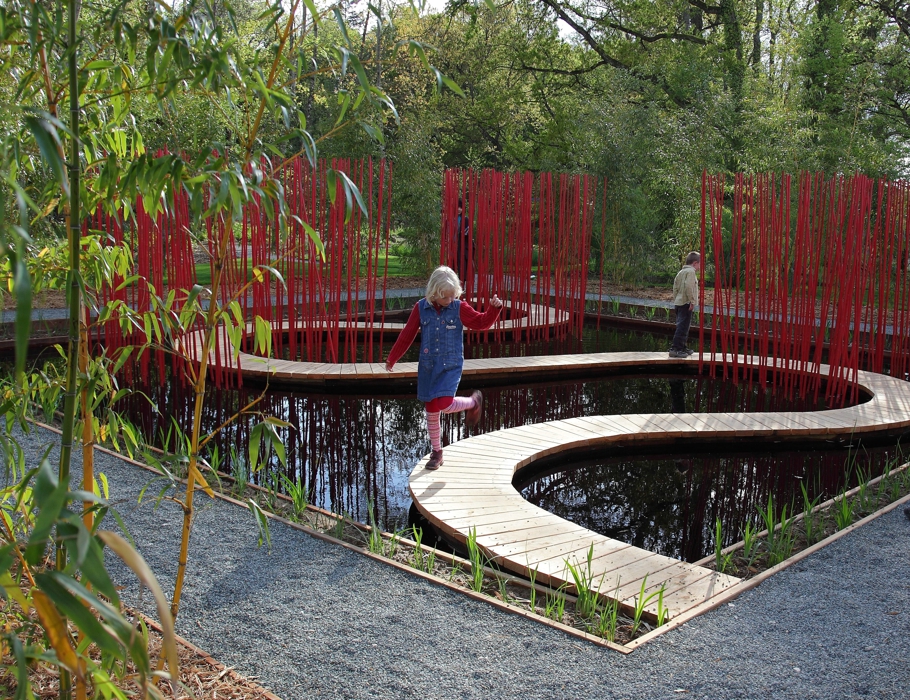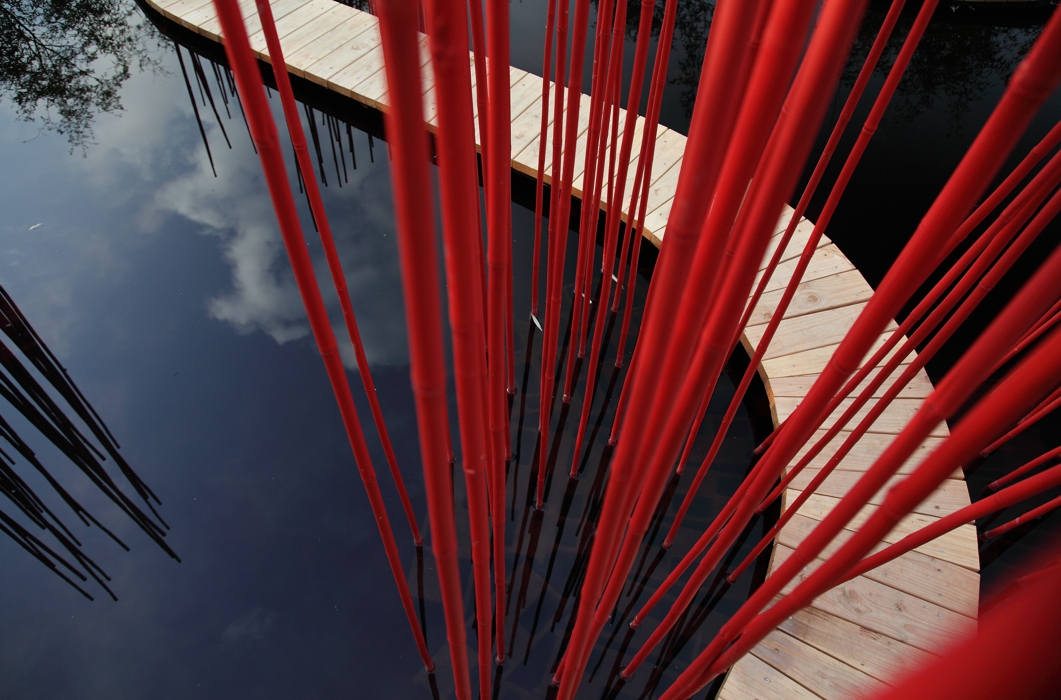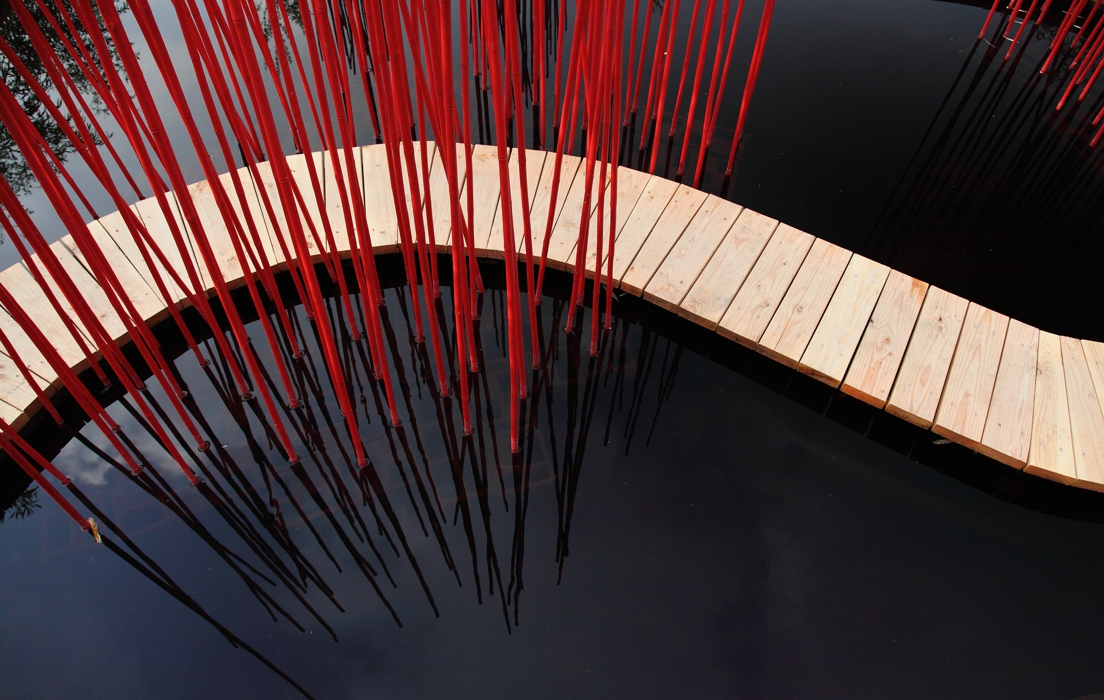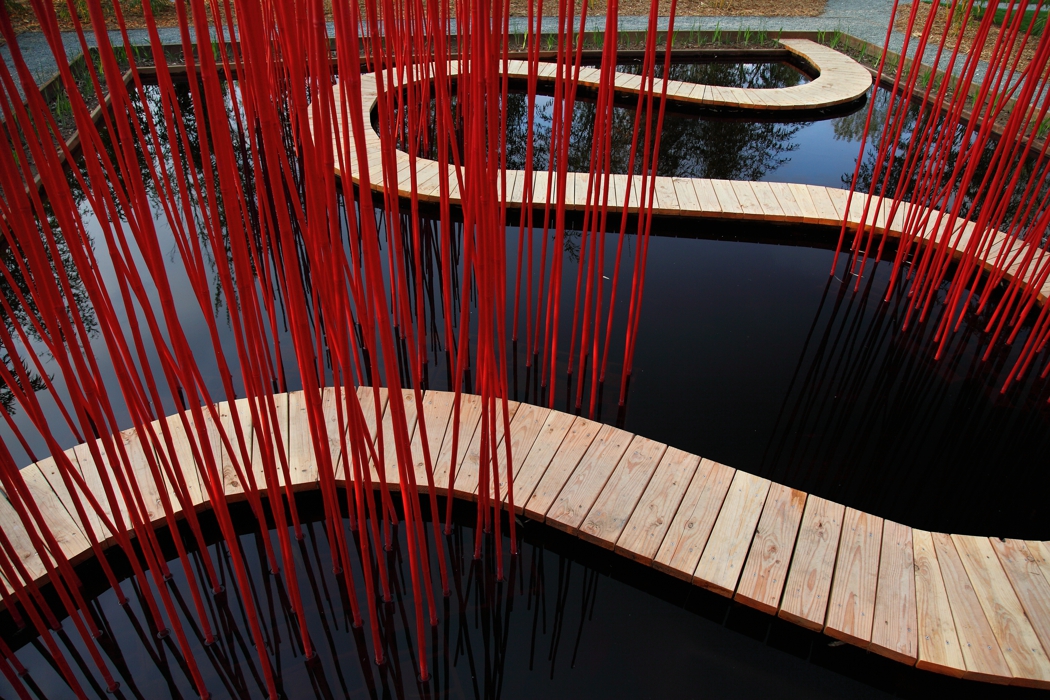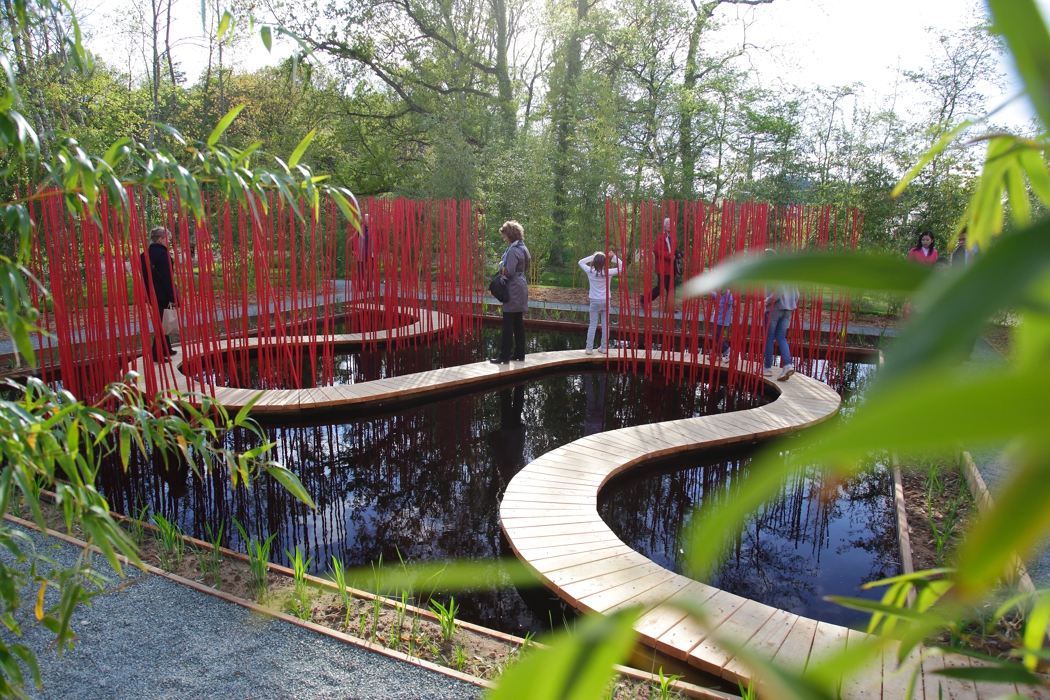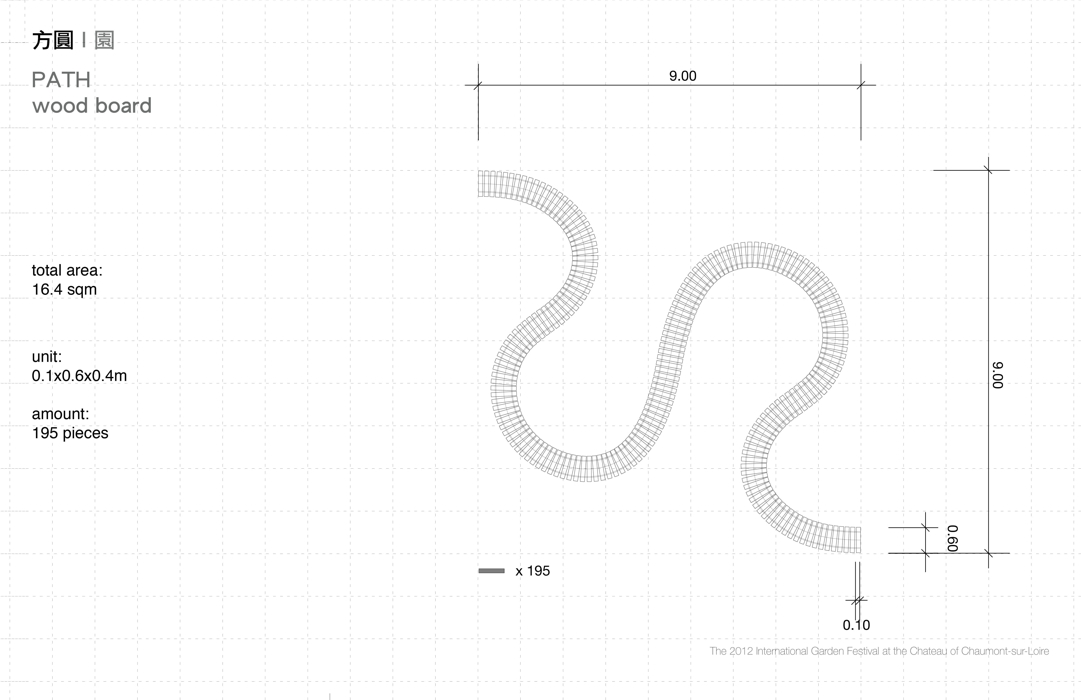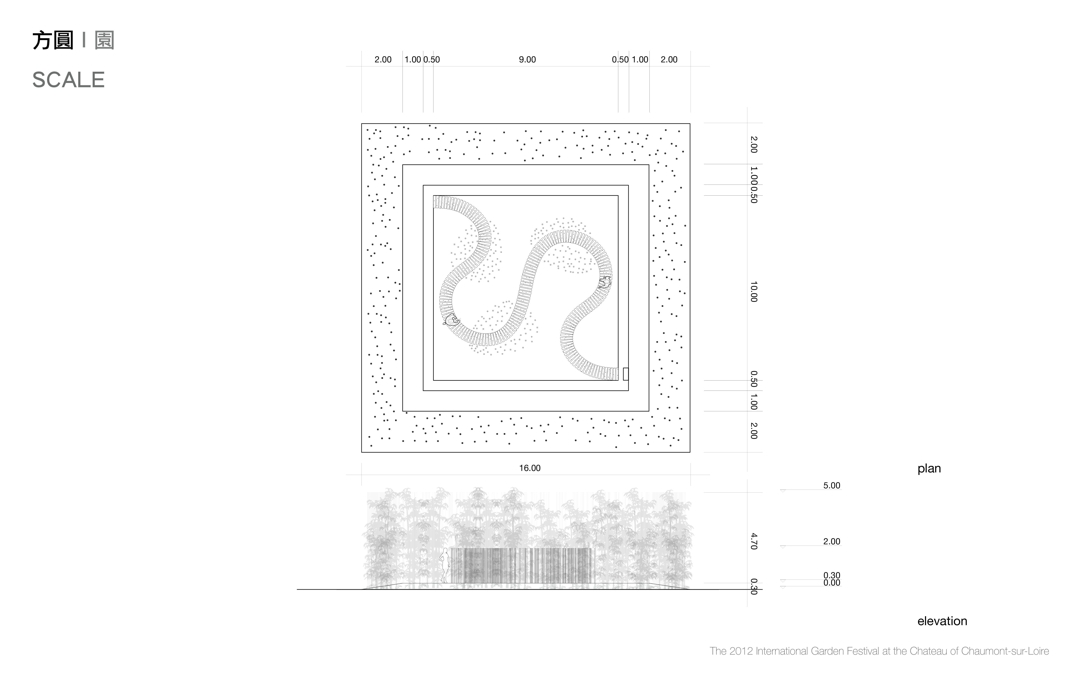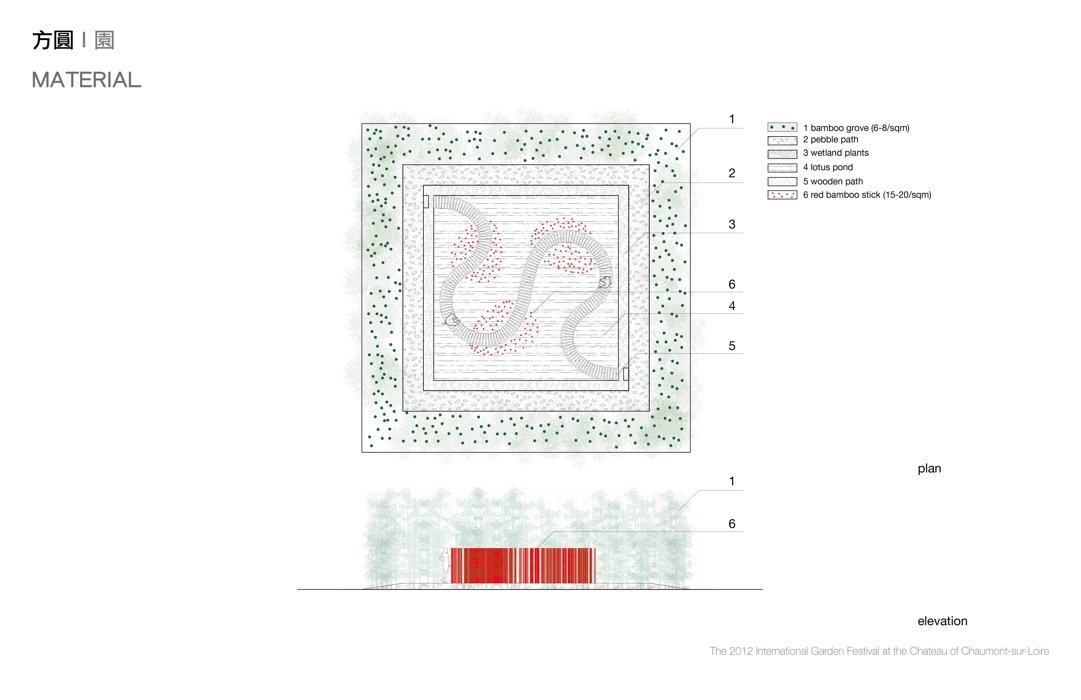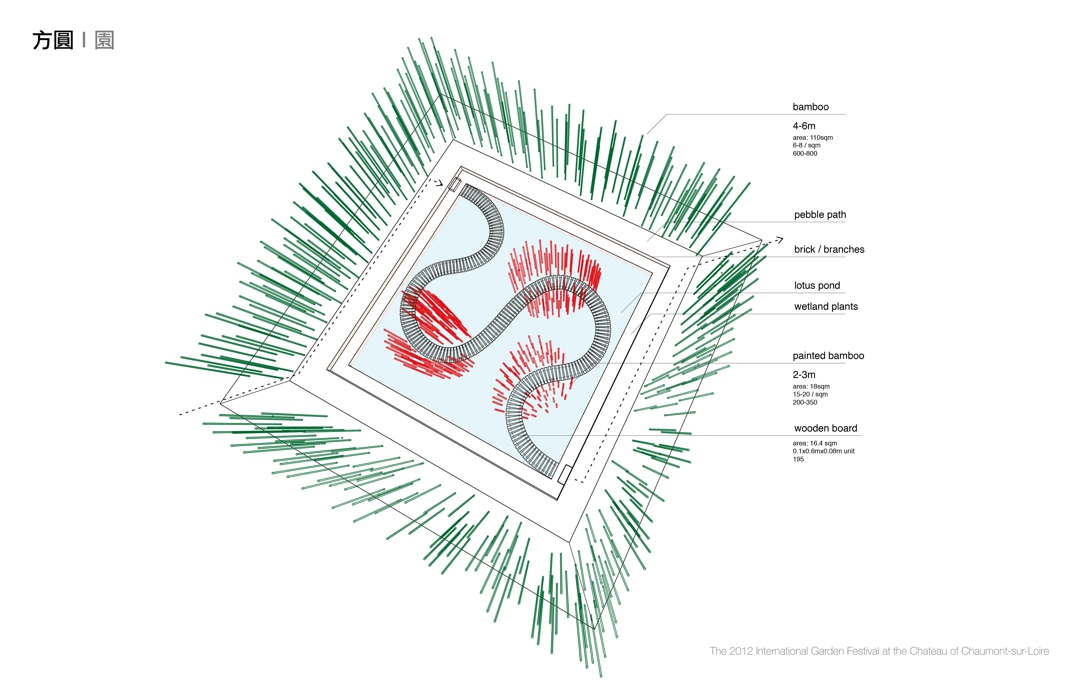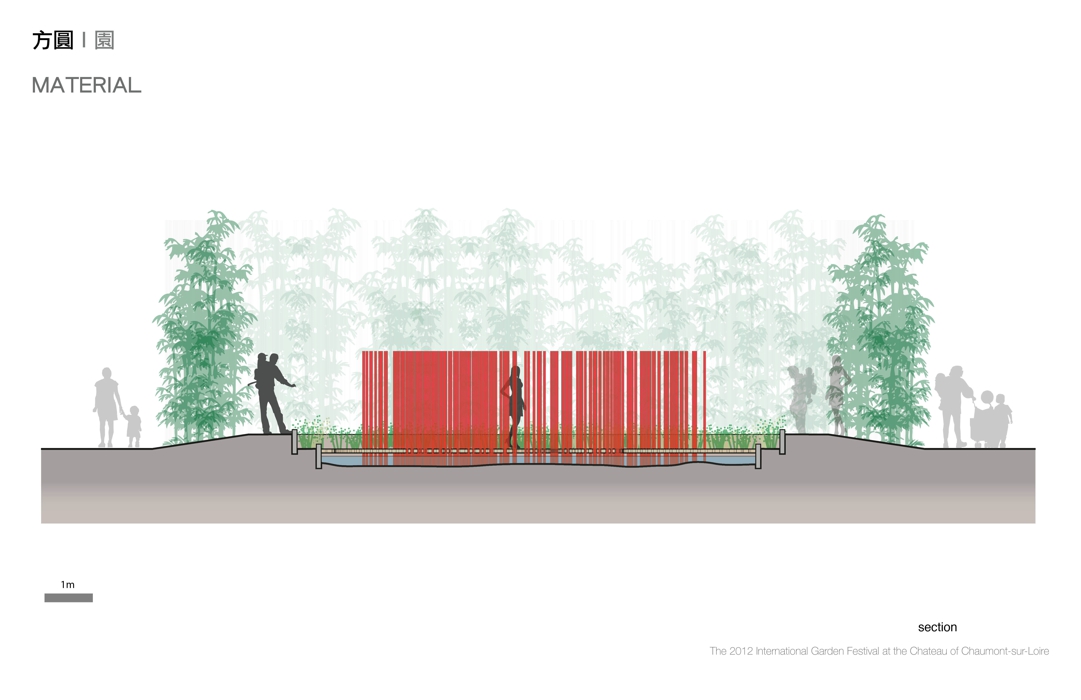France Chaumont-sur-Loire Square and Circle Bridge
Project Information
- Project Location:
- France Château Chaumont
- Project Scale:
- 30m
- Design Time:
- February 2013
- Build Time:
- May 2013
Project Profile
This installation was created for the 2013 International Garden Festival at Château de Chaumont and was retained as a permanent exhibition. It represents a contemporary interpretation of classical Chinese garden philosophy and design, merging traditional spatial aesthetics with modern ecological thinking. The composition adopts the symbolic structure of square outside, circle inside—a time-honored motif in Chinese cosmology. The design employs spatial enclosure, topographical manipulation, and water-sensitive strategies to articulate both philosophical ideas and sustainable design values.
In Chinese courtyard traditions, spatial design reflects both ecological adaptation and aesthetic metaphysics. Concepts such as “water converging into the central hall” and “wealth stays within” reflect both environmental sensitivity and cultural wisdom, especially in harnessing rainwater as a resource. At a philosophical level, Chinese gardens aim to recreate vast natural scenery within confined spaces, using techniques like borrowed views, miniature landscapes, and layered sequences of pavilions, bridges, and paths.
The floating bridge—a 0.5-meter-wide curved wooden path—cuts diagonally across a square reflective pond. This path symbolizes the circle within the square and is designed to accommodate only one person at a time, creating an intimate and immersive experience. As visitors walk across, they pass through clusters of vertical red bamboo poles, harvested from mature bamboo groves nearby—an ecological gesture of reuse and renewal. The reflection of the bamboo in the shallow 30-centimeter pond creates an illusion of depth and infinity, reinforcing the spiritual and meditative essence of the space. The juxtaposition of vertical red bamboo, ever-changing sky reflections, and lush green vegetation evokes a rich sensory and philosophical experience. All plants used in and around the installation are native to China, immersing visitors in a distinct Chinese atmosphere.
Through the interplay of square and circle, straight and curved, red and green, this installation celebrates the wisdom of traditional Chinese dwelling and water culture, while simultaneously offering a new narrative for contemporary ecological design. It is a dialogue between past and present, tradition and innovation—between ancient China and modern sustainability.
